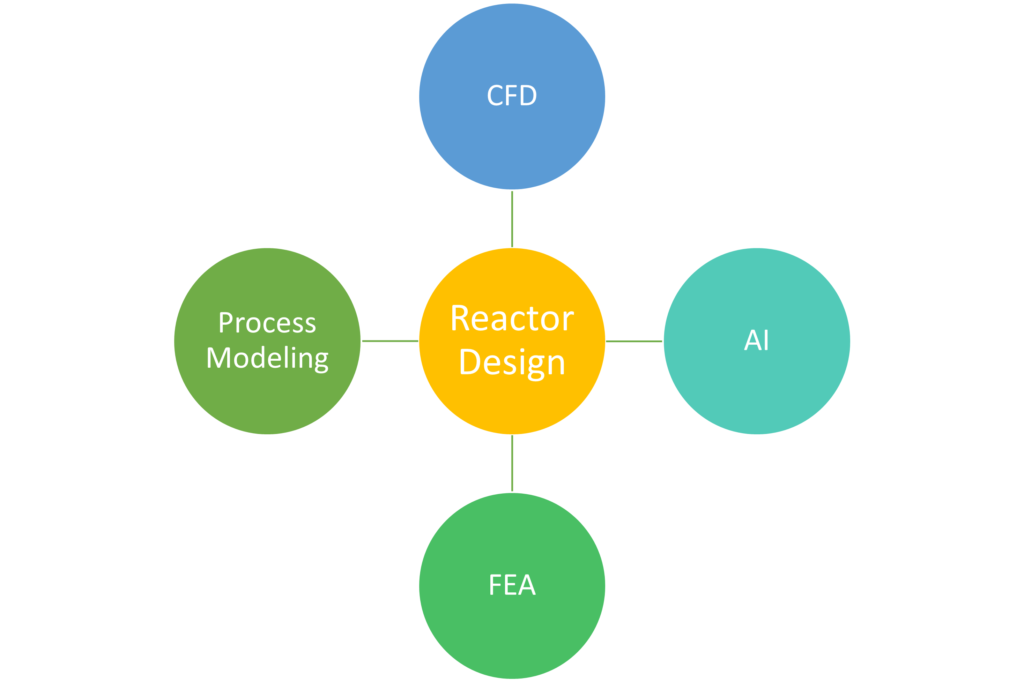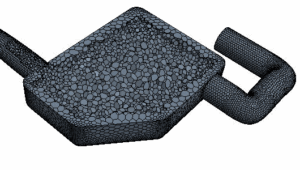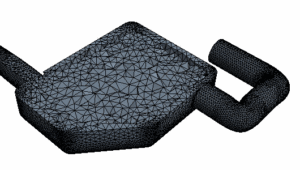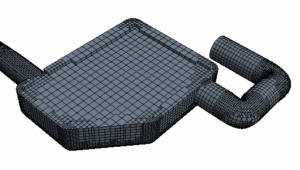We offer end to end Engineering Simulation Services to Design, Debottleneck , Enhance Equipment and Process Performance to achieve
| Improved Product Quality | Lower Energy Consumption |
| Improved Mixing | Uniform Solid Suspension |
| Uniform Gas dispersion | Reduce Power Consumption |
| Reduce Pollutants | Improved Heat transfer |
| Efficient Combustion | Pressure Drop Reduction |
The first step towards debottlenecking is to understand to the customer’s expectations, issues, pain areas very clearly. We believe that the equipment performance can be enhanced by thorough understanding of the process and the operation of the equipment. The process can be extremely complex like polymerization, gas-liquid-solid slurry reactor operating at high temperature and high pressure. Understanding of the process and customers pain can help to lead to the root cause of the issue and hence model the physics of the cause. For example, wide distribution of molecular weight of the polymer chains could be due to inefficient mixing. The inefficiency of the liquid-solid catalytic reaction could be due to improper solid suspension.
The debottlenecking methodology involves the application of various tools and techniques based on the nature of the problem statement.
Primarily, to start with a process related problem, we adopt chemical engineering based process modeling and/or CFD modeling techniques.
If the problem is very complex with less insight into the physics and involves many variables, we follow AI based methodologies.
To address the problems that involves structural, thermal and flow coupling, we use FEA and CFD techniques.

Process Modeling
we develop first principle chemical engineering fundamentals and develop reactor models involving material balance and energy balance. We identify key steps, chemical reactions, heat transfer, mass transfer steps and represent them mathematically. The governing equations are then solved to analyze the performance.
The model is then used for various scenarios and the best scenario ( operating conditions, scheme of reactors etc) is then proposed as a solution.
we use commercial tools or mathematical libraries to solve the mathematical models.

CFD Modeling

As the process and objective becomes clear, the actual CFD modeling process starts.
Domain Selection
The first step is to identify the domain, the boundary, the region of interest for the analysis. We identify all the internals in the equipment that can affect mixing process inside the domain/equipment. The engineering drawings with different views gives all the actual dimensions and details of the domain.
Using a CAD software, the actual to the scale, three dimensional CAD model of domain is created
Boundary Conditions/Operating Conditions
The flow rates, temperature, pressure, composition etc that quantifies the various streams entering and leaving the domain are measured. These conditions are also measured regularly by the operations teams and recorded.
Meshing
The selected domain and the identified boundaries are then discretized into very small volume elements called mesh/cells. This process is called meshing. In each of the cells, the governing equations of flow, heat and mass transfer, turbulence and mass conservations are solved using numerical techniques.
Physics setup
This is a most important step of CFD modeling. In this step, the physics involved in the equipment is specified. For example, if heat transfer is involved in the process, then thermal models needs to be selected. Appropriate turbulence models needs to be chosen to represent the turbulence in the equipment. If chemical reaction or combustion is involved, the species involved, reactions, stoichiometry, mechanism of combustion, rates of reactions, heat of reaction etc are specified. If the problem involves multiple phases, then the volume fraction of each phase is also needed.

FluiDimensions has in-depth skills in modeling complex equipment and detailed physics.

Solve
The numerical methods to solve the non-linear second order differential equations are selected. The convergence criteria, relaxation parameters, time step size are chosen to solve the governing equations.
The automatic iterative procedure is adopted till the convergence is achieved. The solution obtained is numerically correct.
Analysis
The solution obtained is now analyzed and related to the problem being solved. The velocity, temperature, composition, volume fraction, turbulence parameters are plotted on different planes, locations of interest.

We work very closely with our customers and explain the results and our analysis in depth.
The strategy of providing the solution to the problem is now decided. A detailed discussion with the customer is done to understand the constraints of the design solutions or operating conditions. It is from these discussions few alternatives are identified that can be easily implemented at the site.
The whole above methodology is repeated till the optimal design or operating condition is arrived.
Finite Element Analysis for Coupled Structural and Thermal issues

Solution with AI Methodology
In the situation when the physics is very complex and the kinetics, chemical reactions, properties etc are not available in great details, and involves a lot of inputs /streams /variables, we recommend the approach of Artificial Intelligence. This approach needs a historical data over a long period covering variability in the process and parameters involved. More critical is the data of output variables like quality, yield, conversions, composition etc.
The historical data is first cleaned and smoothened to eliminate noise and wrong data. The critical aspect o this approach is data analytics where the available data is analyzed thoroughly to understand the process variations and any underlying trends in different input variables (Xs) and output variables (Ys).



Once the data is cleaned, we use the combination of AI tools and our understanding, expertise to filter out few variables for further analysis from a large number of X’s.
We use supervised Regression method, optimize hyper parameters based on mean square errors, MAPE and R2.
A model with satisfies the statistical error criteria is used for analysis. Trend Analysis, Feature Importance gives an in-depth under standing of important variables affecting the output, the sensitivity of X’s on Y.
The model is now ready for online deployment!

Final Delivery
A detailed report in the form of presentation or/and document is provided with all the results, analysis and the engineering drawings, optimal operating conditions for the implementation is submitted.



